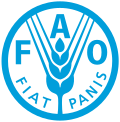| This article may rely excessively on sources too closely associated with the subject, potentially preventing the article from being verifiable and neutral. Please help improve it by replacing them with more appropriate citations to reliable, independent, third-party sources. (September 2024) (Learn how and when to remove this message) |

DAD-IS is the acronym for Domestic Animal Diversity Information System, which is a tool developed and maintained by the Food and Agriculture Organization of the United Nations. It is part of FAO's programme on management of animal genetic resources for food and agriculture. It includes a searchable database of animal breed-related information.
Overview
FAO began to collect data on animal breeds in 1982. The first version of DAD-IS was launched in 1996 and the software has been updated several times. The fourth and latest version of DAD-IS was launched in 2017.
DAD-IS includes a searchable database of information about animal breeds, the Global Databank for Animal Genetic Resources. DAD-IS contains information on breed characteristics, uses, geographic distribution and demographics; more than 4,000 images; and tools for generating user-defined reports; and has a multilingual interface and content. It also provides contact information for the National and Regional Coordinators for the Management of Animal Genetic Resources (AnGR). Data is collected and entered by each country's National Coordinator via web-based data-entry screens available in several languages.
Data from DAD-IS is used for reporting on the global status and trends of animal genetic resources, including the data for indicators 2.5.1b (number of animal genetic resources for food and agriculture secured in either medium- or long-term conservation facilities) and 2.5.2 (proportion of local breeds classified as being at risk of extinction) of the UN Sustainable Development Goals.
Breeds in the global databank
The data in DAD-IS pertain to 37 different mammalian and avian livestock species. Based on data collected as of September 2022, DAD-IS contained data for 11,555 mammalian and 3,758 avian national breed populations. These national breed populations represent a global total of 8,859 breeds, which included 595 breeds (7%) that were reported to be extinct. Local breeds (found in only one region) made up 7,739 entries, while 1,120 were transboundary breeds (found in more than one region).
As of 2022, there were 4,954 mammalian local species reported worldwide, and 2,199 avian species. For transboundary breeds, there were 458 mammalian species and 97 avian species reported regionally.
Risk status
FAO uses the information about population sizes to classify breeds according to risk of extinction. Risk classes that are measured include: at risk (critical, critical-maintained, endangered, endangered-maintained, and vulnerable), not at risk, unknown, and already extinct.
Approximately 27% of breeds (about 2,350) are either classified as being at risk of extinction or are already extinct. A further 54% are classified as unknown risk status (includes breeds with no reports of population during the prior 10 years).
See also
- Food and Agriculture Organization
- Category:Food and Agriculture Organization for other FAO organizations and programs
- FAO GM Foods Platform
Notes
- Definition from the report: National Coordinator for the Management of Animal Genetic Resources: the government-nominated person who coordinates national implementation of the Global Plan of Action for Animal Genetic Resources and leads the development and operation of a national network on AnGR. He or she is the contact person for communication with FAO on matters relating to the implementation of the Global Plan of Action for Animal Genetic Resources and with global and regional AnGR networks.
- See tables 2 through 5 in the report for further explanation.
References
- FAO (13 April 2023). "Animal genetics". Food and Agriculture Organization. Retrieved 18 April 2023.
- FAO (16 November 2017). "Launch of the 4th version of the Domestic Animal Diversity Information System DAD-IS". Food and Agriculture Organization. Retrieved 21 March 2018.
- ^ FAO (2011). Developing the institutional framework for the management of animal genetic resources (PDF). Rome: Food and Agriculture Organization. ISBN 978-92-5-106972-1.
- "SDG indicator metadata (2.5.1.b)" (PDF). Sustainable Development Goals. 10 July 2023.
- "SDG indicator metadata (2.5.2)" (PDF). Sustainable Development Goals. 15 May 2023.
- ^ FAO (January 2023). "Status and Trends of Animal Genetic Resources - 2022" (PDF).
- FAO (2013). In vivo conservation of animal genetic resources (PDF). Rome: Food and Agriculture Organization. pp. 43ff. ISBN 978-92-5-107725-2.
External links
- "Domestic Animal Diversity Information System (DAD-IS)". Food and Agriculture Organization.
- "National Coordinators". Food and Agriculture Organization.